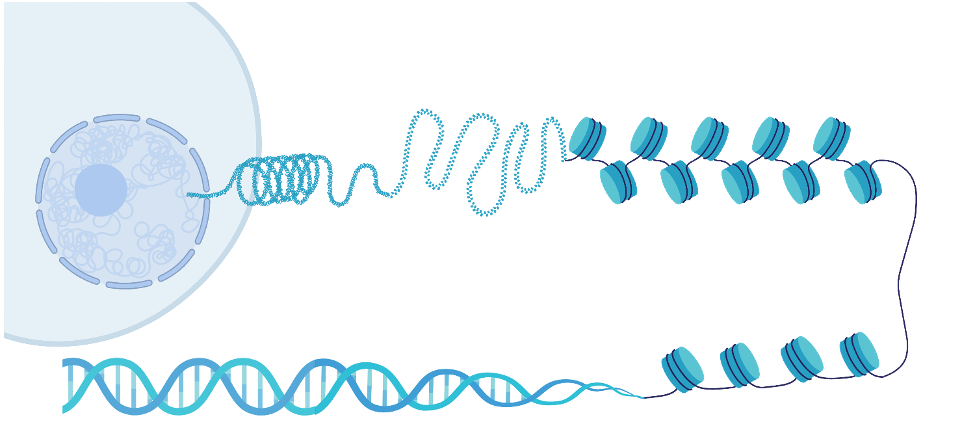
Plants beat the heat through epigenetic modifications
We are heading into the dog days of summer here in Alabama. And I don’t know about you but there is only so much that ice-cold lemonade, popsicles, and a dip in a pool can do to help beat the heat. I wish there was some other way that I could enjoy the beautiful summer weather without sweating and sunburning my way back indoors.
Many other organisms across our wide world have learned to do just that, adapting to environmental stressors like heat to more effectively survive in specific environments. The mechanisms by which these adaptations occur, however, are not always well-defined. In a study published in Nature Communications in June 2021, scientists discovered a potential mechanism by which some plants adapt to heat stress.
Plant memories 
Climate change is making the weather more unpredictable all across our planet, with hot days becoming much more frequent. The ability to adapt to these environmental changes is essential for plants since they cannot just get up and walk away from damaging conditions. Instead, they must internally regulate their response to heat in order to survive.
If you have ever had a really bad sunburn, it sticks in your mind the next time you are in the sun. The painful memory probably makes you more likely to sunscreen or stay under the protective shade of an umbrella. It certainly does for me.
Similarly, plants can “remember” past exposure to hot situations in a survival technique called acquired thermotolerance. Scientists have been studying acquired thermotolerance for years in an attempt to create more heat tolerant plants and agricultural crops. But until now the exact mechanism by which it occurs has remained unclear.
Epigenetic modifications
In their study, scientists from Nara Institute of Science and Technology set out to discover how plants retain a memory of environmental changes like temperature. The team conducted studies in a model plant called Arabidopsis thaliana to determine how it regulates itself during and after intense heat. More specifically, the team looked at epigenetic modifications in the plant’s DNA, which are chemical changes to DNA that affect gene activity without altering the DNA sequence. Many of these modifications occur in response to a change in the environment, like an increase in temperature.
By growing Arabidopsis thaliana plants under normal conditions and then exposing them to increased temperatures, the scientists discovered that thermotolerance involves a group of proteins called JUMONJI (JMJ). I know what you are thinking and no, these proteins are not related to the fictional board game Jumanji and will not suck you into a game and transport you to the jungle.
Instead, JMJ proteins produce epigenetic changes in genes associated with stress. They do this by altering how easily genes can be accessed and activated. Let’s explain this with an analogy: imagine you’ve written out a recipe on a long, thin strip of paper, and then folded it up accordion-style. It’s much harder to read when tightly folded than when the paper is loose and more relaxed. The same is true of DNA, but instead of accordion folds the DNA gets wrapped around a set of proteins like thread wrapped around a spool. This wrapping allows several feet of DNA to be condensed into the nucleus of a tiny cell. Regions of DNA that contain active genes are generally more loosely wrapped, which makes the genes easier to access. Silent genes are often more tightly wound.
The proteins that make up these spools are called histones. Adding or removing a small chemical tag like a methyl group (one carbon atom connected to three hydrogens) can lead to tighter or looser DNA wrapping depending on which part of the histone is modified. That can increase gene activity or silence it completely. Modifying the number of methyl groups to alter gene activity is an epigenetic change.

OK, back to the JMJ proteins and plant responses to heat. When temperatures increase, the JMJ proteins remove methyl groups from histones in specific DNA regions that contain “heat shock” genes. This loosens the wrapping, activates the genes and leads to the production of proteins that help protect cells from the harmful effects of increased temperature.
The researchers found that those plants that survived and acclimated to the high temperatures were able to maintain heat memory for multiple days. The data suggest JMJ proteins create these memories by generating a faster heat shock response when high temperatures recur in the now acclimated plants.
Extreme temperature variations can disrupt plant growth and prevent the formation of grain and fruit. The findings from this study are important and could be used to improve heat tolerance in plants and crops threatened by climate change. Because heat shock response is conserved across the tree of life, these findings could also be useful to the field of animal and human genetics. That’s something to think about the next time you find yourself outside on a sweltering summer day.
To schedule a media interview with Dr. Neil Lamb or to invite him to speak at an event or conference, please contact Lara Burhenn by email at lburhenn@hudsonalpha.org or by phone: Office (256) 327-5216 | Cell (256) 937-8210


